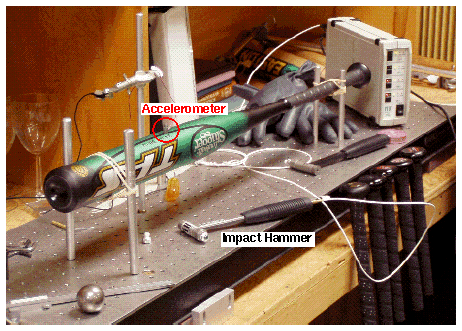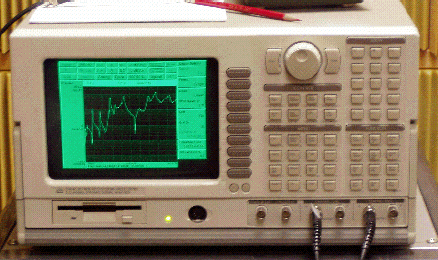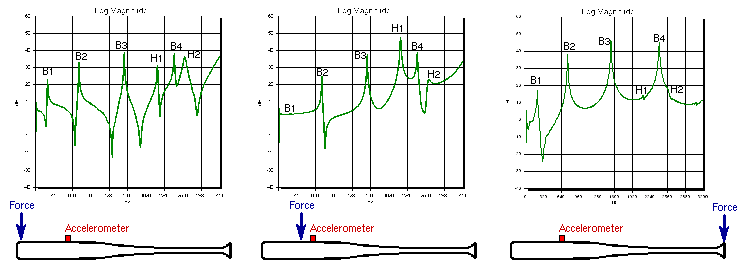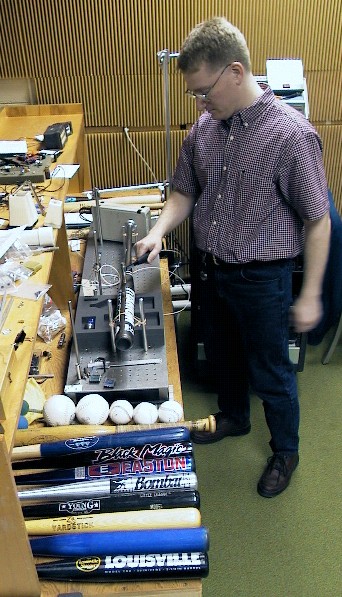The bats are suspended at the barrel and handle ends using rubberands. This provides some stability so the bats won't bounce around during testing, but doesn't prevent the bats from vibrating. I use a special impact hammer to provide the input force - the hammer has a force transducer in the head so as to measure time history of the force impulse when the hammer stikes the test object (baseball bat). I measure the vibration response of the bat with a very small (1.0 gram) accelerometer. I typically attach the accelerometer on the barrel about 9 inches from the end - for most bats this allows me to find the first five bending and first three hoop modes. I tap the bat at 1-inch intervals along the length, keeping the accelerometer fixed, thus collecting a measurement of force input acceleration response for every pair of points along the length of the bat.
The electrical signals from the hammer and accelerometer are fed into a 2-channel frequency analyser, where they are converted (transformed) from time signals (amplitude versus time) into frequency spectra (amplitude versus frequency). The frequency response from the accelerometer is divided by the frequency response of hammer impact resulting in what is called the Frequency Response Function (FRF) for the impact. Each FRF record is saved for post-processing with special computer software to produce the cool animations of the vibrating mode shapes. However, with some experience comparing FRF data for a couple of different impact locations one can quickly identify the frequencies for the different types of vibrational patterns a bat exhibits.

Fig. 1. Equipment setup for experimental modal analysis.

Fig. 2. Frequency analyzer displaying a Frequency Response Function (FRF).

Fig. 3. Comparing FRF results for three impact locations allows for identification of bending and hoop modes.


Raw mode shapes for the first two bending modes of a 34" softball bat, obtained after post processing FRF data.


Animations of the first two bending modes for the same softball bat obtained by mapping raw mode shape data to the physical profile of the bat.
